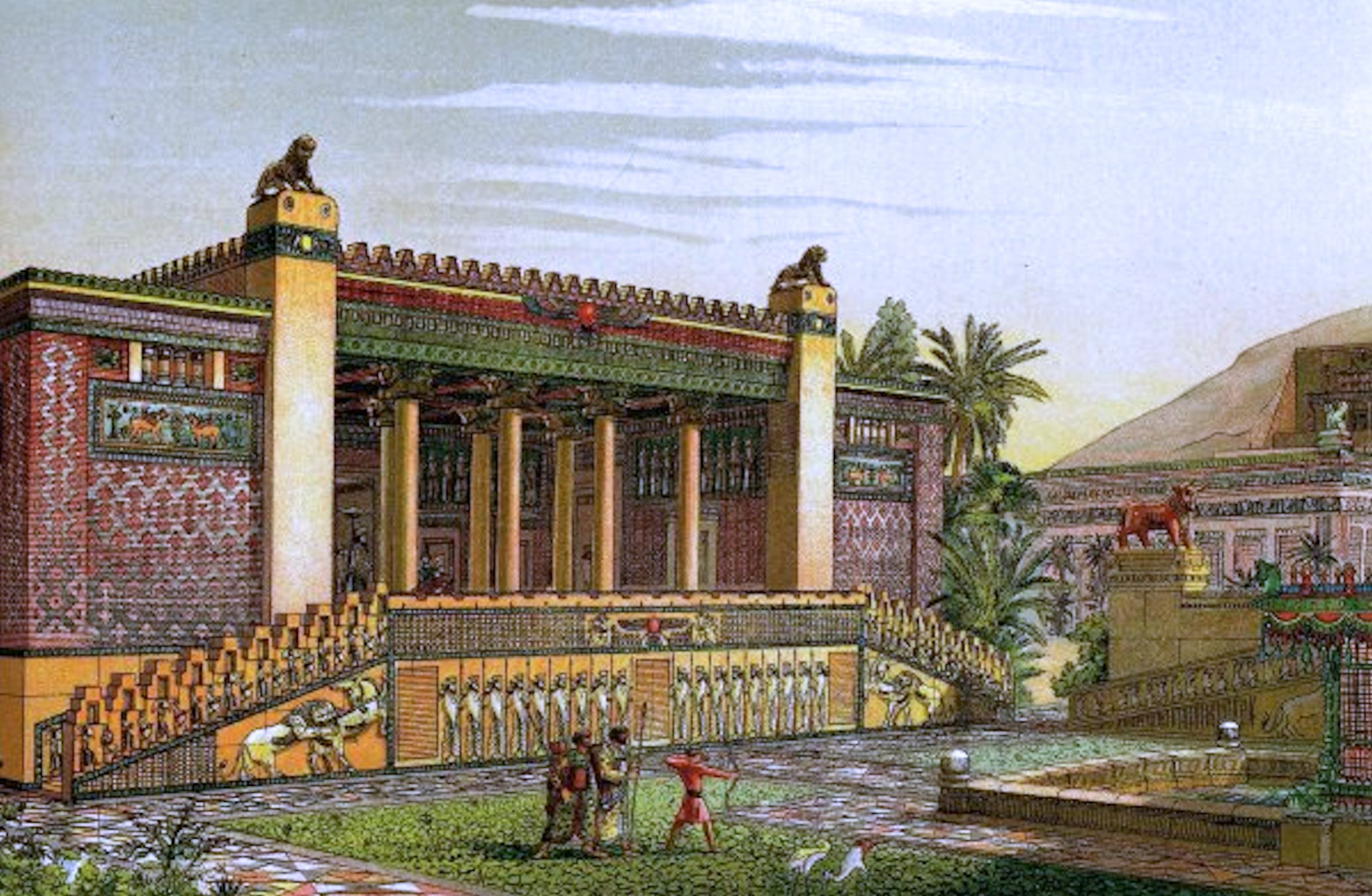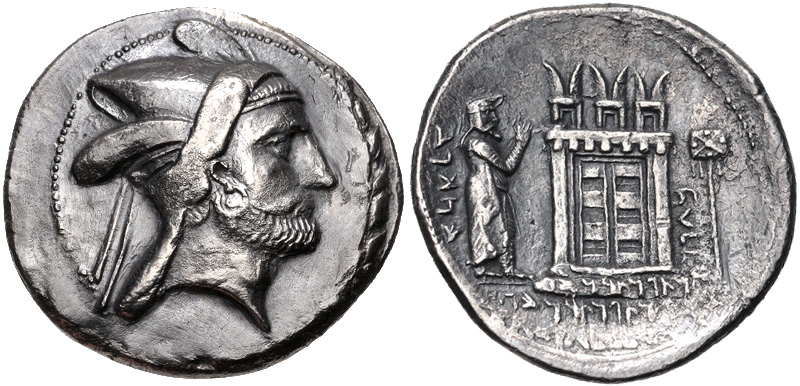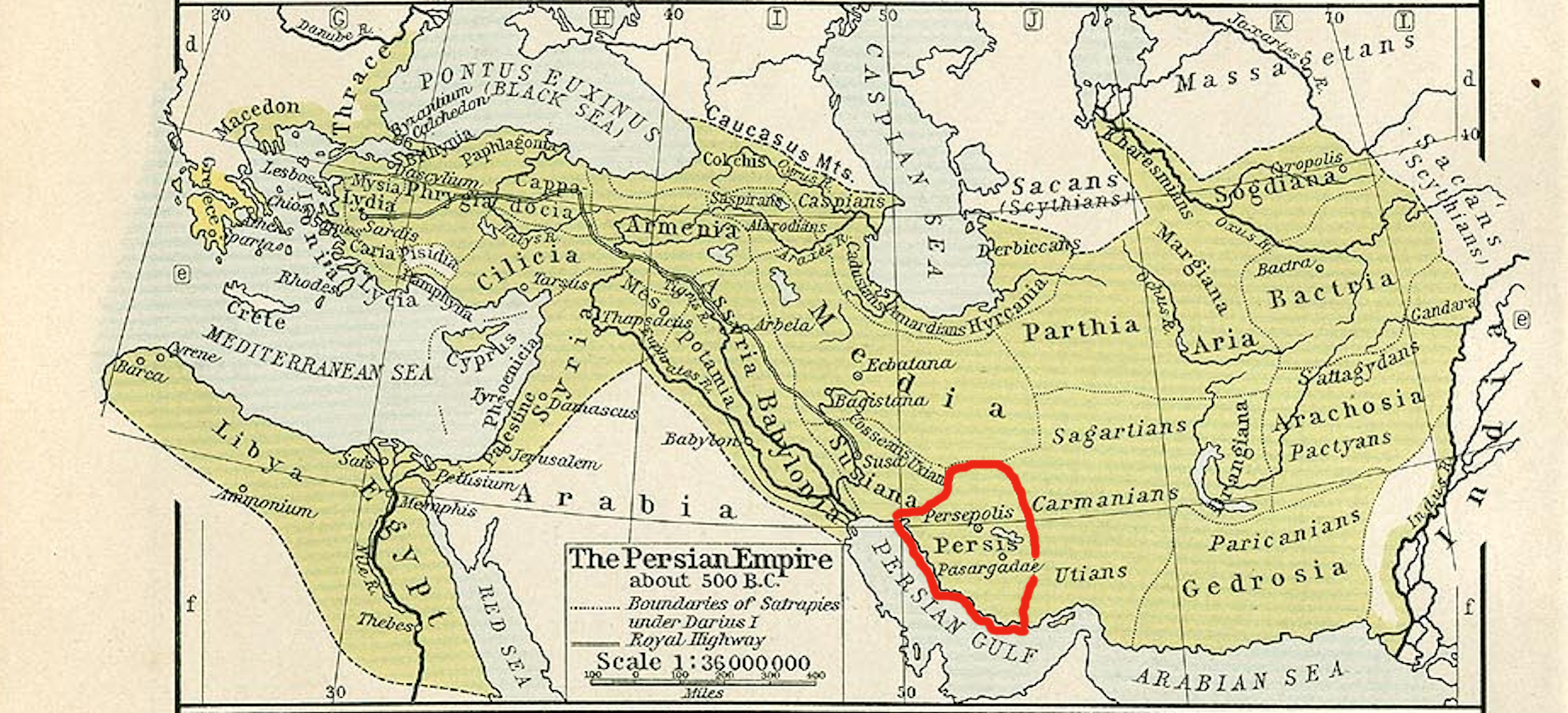|
Shapur (Frataraka)
Shapur ( pal, 𐭱𐭧𐭯𐭥𐭧𐭥𐭩) was an Iranian prince, who was the penultimate King of Persis from 207–210 to 211/2. He was succeeded by his younger brother Ardashir I, who founded the Sasanian Empire. Background and state of Pars Pars (also known as Persis), a region in the southwestern Iranian plateau, was the homeland of a southwestern branch of the Iranian peoples, the Persians. It was also the birthplace of the first Iranian Empire, the Achaemenids. The region served as the center of the empire until its conquest by the Macedonian king Alexander the Great (). Since the end of the 3rd or the beginning of the 2nd century BCE, Pars was ruled by local dynasts subject to the Hellenistic Seleucid Empire. These dynasts held the ancient Persian title of ''frataraka'' ("leader, governor, forerunner"), which is also attested in the Achaemenid-era. Later under the ''frataraka'' Wadfradad II (fl. 138 BC) was made a vassal of the Iranian Parthian (Arsacid) Empire. The ... [...More Info...] [...Related Items...] OR: [Wikipedia] [Google] [Baidu] |
Tachara
The Tachara, or the Tachar Château, also referred to as the Palace of Darius the Great, was the exclusive building of Darius I at Persepolis, Iran. It is located 70 km northeast of the modern city of marvdasht in Fars Province. History and construction The construction dates back to the time of the Achaemenid Empire (550 BC–330 BC). The building has been attributed to Darius I, but only a small portion of it was finished under his rule. It was completed after the death of Darius I in 486, by his son and successor, Xerxes I, who called it a ''taçara'' in Old Persian, translated to "winter palace". It was then used by Artaxerxes I. Its ruins are immediately south of the Apadana. On the walls of its gates, there are carvings that shows one of the famous Achaemenids architecture motifs: the Battle of Shahriar and Lion. In the 4th century BC, following his invasion of Achaemenid Persia in 330 BC, Alexander the Great allowed his troops to loot Persepolis. This palace was ... [...More Info...] [...Related Items...] OR: [Wikipedia] [Google] [Baidu] |
Seleucid Empire
The Seleucid Empire (; grc, Βασιλεία τῶν Σελευκιδῶν, ''Basileía tōn Seleukidōn'') was a Greek state in West Asia that existed during the Hellenistic period from 312 BC to 63 BC. The Seleucid Empire was founded by the Macedonian general Seleucus I Nicator, following the division of the Macedonian Empire originally founded by Alexander the Great. After receiving the Mesopotamian region of Babylonia in 321 BC, Seleucus I began expanding his dominions to include the Near Eastern territories that encompass modern-day Iraq, Iran, Afghanistan, Syria, all of which had been under Macedonian control after the fall of the former Persian Achaemenid Empire. At the Seleucid Empire's height, it had consisted of territory that had covered Anatolia, Persia, the Levant, and what are now modern Iraq, Kuwait, Afghanistan, and parts of Turkmenistan. The Seleucid Empire was a major center of Hellenistic culture. Greek customs and language were privileged; the wide varie ... [...More Info...] [...Related Items...] OR: [Wikipedia] [Google] [Baidu] |
Vologases V
Vologases V ( xpr, 𐭅𐭋𐭂𐭔 ''Walagash'') was King of Kings of the Parthian Empire from 191 to 208. As king of Armenia (), he is known as Vologases II. Not much is known about his period of kingship of Armenia, except that he put his son Rev I () on the Iberian throne in 189. Vologases succeeded his father Vologases IV as king of the Parthian Empire in 191; it is uncertain if the transition of power was peaceful or if Vologases took the throne in a civil war. When Vologases acceded the Parthian throne, he passed the Armenian throne to his son Khosrov I (). Vologases' reign was marked by war with the Roman Empire, lasting from 195 to 202, resulting in the brief capture of the Parthian capital of Ctesiphon, and reaffirmation of Roman rule in Armenia and northern Mesopotamia. At the same time, internal conflict took place in the Parthian realm, with the local Persian prince Pabag seizing Istakhr, the capital of the southern Iranian region of Persis. Name Vologases is th ... [...More Info...] [...Related Items...] OR: [Wikipedia] [Google] [Baidu] |
Anahid Fire-temple
The Temple of Anahita (Middle Persian: ''Ādur-Anāhīd'') was an ancient fire temple in Istakhr dedicated to the worship of the Iranian peoples, Iranian goddess Anahita, Anahid. History The temple was probably founded by the Achaemenid Empire, Achaemenid king of kings Artaxerxes II (), who had shrines and statues of her constructed throughout his realm. The temple was ransacked by the Macedonia (ancient kingdom), Macedonians during Alexander the Great's conquests. At the start of the 3rd century AD, the temple was repaired and adorned by the Persian people, Persian House of Sasan, Sasanian family, who acted as the hereditary caretakers of the temple; Sasan, the eponymous ancestor of the family, is the first attested member to serve as the warden of the temple.; ; ; The guardianship of the temple was of high importance to the Sasanians. Ardashir I (), who overthrew the Parthian Empire and established the Sasanian Empire, Sasanian control over the country, reportedly sent the ... [...More Info...] [...Related Items...] OR: [Wikipedia] [Google] [Baidu] |
Istakhr
Istakhr (Middle Persian romanized: ''Stakhr'', fa, اصطخر, translit=Istakhr also spelt استخر in modern literature) was an ancient city in Fars province, north of Persepolis in southwestern Iran. It flourished as the capital of the Persian ''Frataraka'' governors and Kings of Persis from the third century BC to the early 3rd century AD. It reached its apex under the Sasanian Empire (224-651 AD), and was the hometown of the Sasanian dynasty. Istakhr briefly served as the first capital of the Sasanian Empire from 224 to 226 AD and then as principal city, region, and religious centre of the Sasanian province of Pars (Sasanian province), Pars. During the Arab conquest of Iran, Istakhr was noted for its stiff resistance, which resulted in the death of many of its inhabitants. Istakhr remained a stronghold of Zoroastrianism long after the conquests, and remained relatively important in the early Islamic era. It went into gradual decline after the founding of nearby Shiraz, befo ... [...More Info...] [...Related Items...] OR: [Wikipedia] [Google] [Baidu] |
Bazrangi
Bāzrangī (also known as Bazrangids or Badhrangids) is the attested family name of a dynasty of petty rulers in south western Iran near the end of Arsacid Empire as well as the name of geographical districts. As Sasan's wife family The lord Sasan who is named as the eponymous ancestor of the Sasanians took, according to Tabari, a wife from a family called "Bazrangi". The woman was called Rambehesht and according to Tabari "possessed beauty and perfection". She bore Sasan a son called Papak. page 4. In the account of Tabari, Ardashir, the founder of Sassanid dynasty was sent for educational reasons, at the request of his father Papak, to Tīrī who was the eunuch of Gōčehr the king of Eṣṭaḵr. Later Ardashir succeeded Tīrī who was the chief officer (i.e. argbed) of Dārābgerd. Ardashir managed to make a number of local conquests and then wrote to his father to revolt against Gōčehr. Papak did so and killed Gōčehr and took his throne. This is the last time Tabari me ... [...More Info...] [...Related Items...] OR: [Wikipedia] [Google] [Baidu] |
Gochihr
Gochihr (also spelled Gozihr) was a Persian dynast from the Bazrangid dynasty, who ruled Istakhr as a Parthian vassal in the early 3rd-century. He was killed in 205/6 by the Persian prince Pabag Pabag ( pal, 𐭯𐭠𐭯𐭪𐭩, ''Pāpak/Pābag''; New Persian: ''Bābak''), was an Iranian prince who ruled Istakhr, the capital of Pars, from 205 or 206 until his death sometime between 207–210. He was the father, stepfather, grandfathe ..., who had his domains conquered. Sources * * * * {{Iran-royal-stub 3rd-century Iranian people History of Fars Province Monarchs killed in action 3rd-century monarchs in the Middle East 206 deaths 2nd-century births Vassal rulers of the Parthian Empire ... [...More Info...] [...Related Items...] OR: [Wikipedia] [Google] [Baidu] |
Bakhtegan Lake
Lake Bakhtegan ( fa, دریاچۀ بختگان) was a salt lake in Fars Province, southern Iran, about east of Shiraz and west of the town of Neyriz. Bakhtegan, with a surface area of , was Iran's second-largest lake. It was fed by the Kor River. The construction of several dams on the Kor River had significantly reduced the water flow into the lake, increased its salinity, and extirpated the lake's populations of flamingos and other migratory bird Bird migration is the regular seasonal movement, often north and south along a flyway, between Breeding in the wild, breeding and wintering grounds. Many species of bird migrate. Animal migration, Migration carries high costs in predation a ...s. Lake Bakhtegan is now completely dry and the living species have either died or moved to other locations. Description Lake Bakhtegan, once Iran's second largest lake, was fed mostly by the Kur River, while Lake Tashk was fed by overflow from the marshes at its west end and by a ... [...More Info...] [...Related Items...] OR: [Wikipedia] [Google] [Baidu] |
Banavan, Fars
Banavan ( fa, بنوان, also Romanized as Banavān and Banvān; also known as Khir, and Qal‘eh-i-Banaven) is a village in Khir Rural District, Roniz District, Estahban County, Fars Province, Iran. At the 2006 census, its population was 1,695, in 427 families. References Populated places in Estahban County {{Estahban-geo-stub ... [...More Info...] [...Related Items...] OR: [Wikipedia] [Google] [Baidu] |
Shah
Shah (; fa, شاه, , ) is a royal title that was historically used by the leading figures of Iranian monarchies.Yarshater, EhsaPersia or Iran, Persian or Farsi, ''Iranian Studies'', vol. XXII no. 1 (1989) It was also used by a variety of Persianate societies, such as the Ottoman Empire, the Kazakh Khanate, the Khanate of Bukhara, the Emirate of Bukhara, the Mughal Empire, the Bengal Sultanate, historical Afghan dynasties, and among Gurkhas. Rather than regarding himself as simply a king of the concurrent dynasty (i.e. European-style monarchies), each Iranian ruler regarded himself as the Shahanshah ( fa, شاهنشاه, translit=Šâhanšâh, label=none, ) or Padishah ( fa, پادشاه, translit=Pâdešâh, label=none, ) in the sense of a continuation of the original Persian Empire. Etymology The word descends from Old Persian ''xšāyaθiya'' "king", which used to be considered a borrowing from Median, as it was compared to Avestan ''xšaθra-'', "power" and " ... [...More Info...] [...Related Items...] OR: [Wikipedia] [Google] [Baidu] |
Phraates II
Phraates II (also spelled Frahad I; xpr, 𐭐𐭓𐭇𐭕 ''Frahāt'') was king of the Parthian Empire from 132 BC to 127 BC. He was the son and successor of Mithridates I (). Because he was still very young when he came to the throne, his mother Rinnu initially ruled on his behalf. His short reign was mainly marked by his war with the Greek Seleucid Empire, who under king Antiochus VII Sidetes () attempted to regain the lands lost to Phraates' father. Initially unsuccessful in the conflict, Phraates II managed to gain the upper hand and defeated Antiochus VII's forces, with the Seleucid himself dying in battle or committing suicide. Phraates II afterwards rushed to the east to repel an invasion by nomadic tribes—the Saka and Yuezhi, where he met his end. He was succeeded by his uncle Artabanus I. Name ''Phraátēs'' () is the Greek form of the Parthian ''Frahāt'' (𐭐𐭓𐭇𐭕), itself from the Old Iranian ''*Frahāta-'' ("gained, earned"). The Modern Persian version ... [...More Info...] [...Related Items...] OR: [Wikipedia] [Google] [Baidu] |
Kings Of Persis
The Kings of Persis, also known as the Darayanids, were a series of Persian kings, who ruled the region of Persis in southwestern Iran, from the 2nd century BCE to 224 CE. They ruled as sub-kings of the Parthian Empire, until they toppled them and established the Sasanian Empire. They effectively formed some Persian dynastic continuity between the Achaemenid Empire (6th century BCE – 4th century BCE) and the Sasanian Empire (3rd century CE – 7th century CE). History Persis (also known as Pars), a region in the southwestern Iranian plateau, was the homeland of a southwestern branch of the Iranian peoples, the Persians. It was also the birthplace of the first Iranian Empire, the Achaemenids. The region served as the center of the empire until its conquest by the Macedonian king Alexander the Great (). Since the end of the 3rd or the beginning of the 2nd century BCE, Persis was ruled by local dynasts subject to the Hellenistic Seleucid Empire. These dynasts held the ancient P ... [...More Info...] [...Related Items...] OR: [Wikipedia] [Google] [Baidu] |




